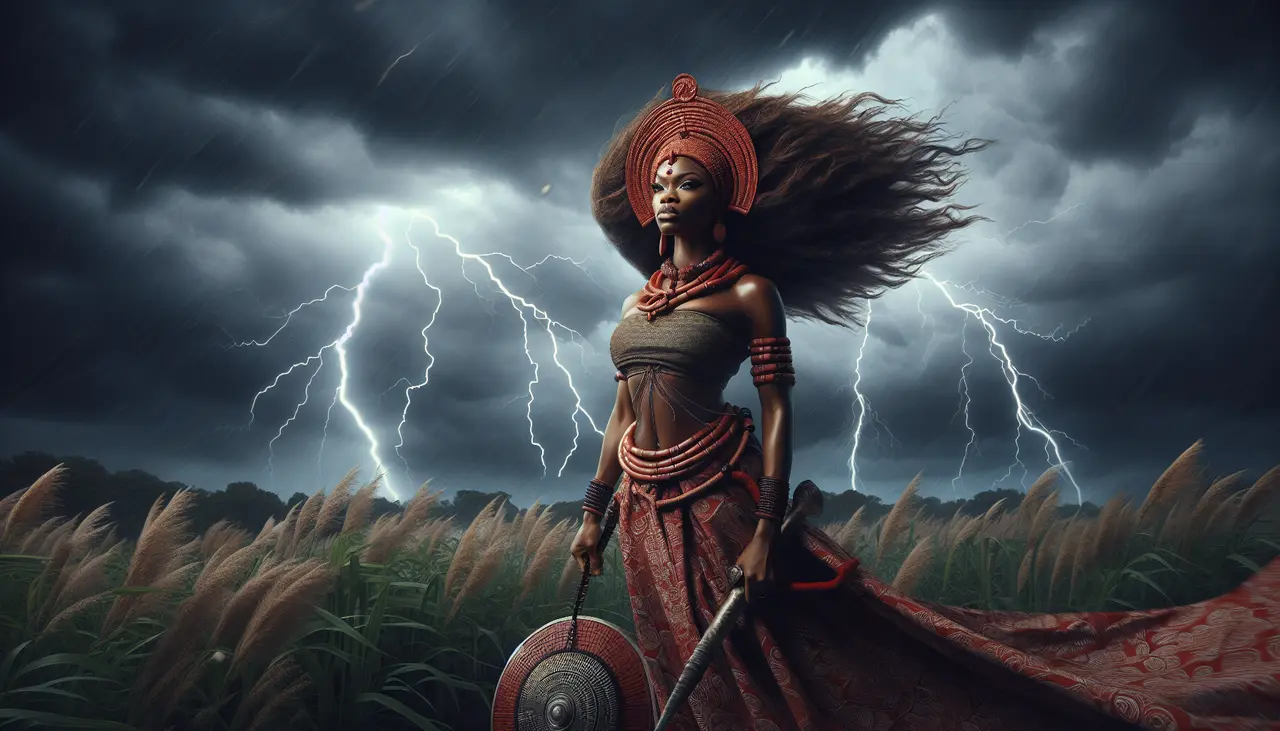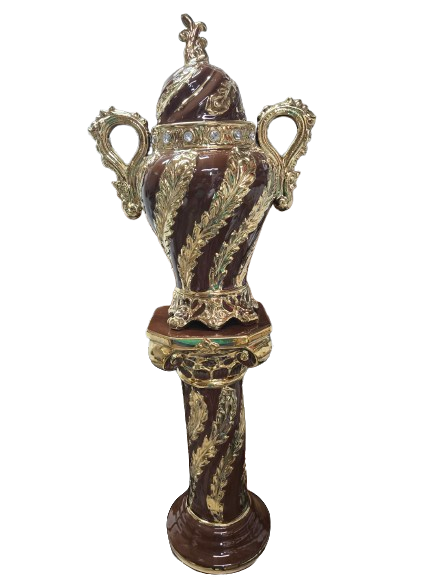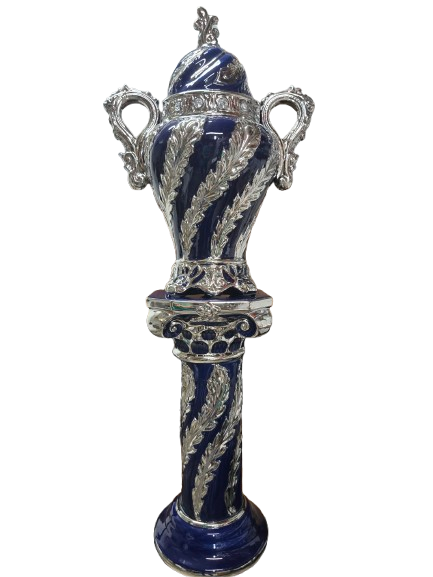Unveiling the Mysteries of the Powerful Oya: Orisha
In the rich tapestry of Yoruba mythology, Orishas are revered deities, each embodying unique powers and domains. Among them stands Oya, the fierce and transformative goddess of winds and storms. Loved and respected for her formidable power and protective nature, Oya is a mysterious figure steeped in ancient traditions that continue to captivate the modern imagination. Join us as we delve into the fascinating world of Oya, exploring her attributes, stories, and enduring significance.
Who is Oya: Orisha?
Oya, a prominent figure in Yoruba mythology, is revered as the Orisha of winds, lightning, and storms. Known for her fierce protection, Oya is considered a guardian of change and transformation, as well as a symbol of feminine energy and power.
In many ways, Oya embodies the spirit of transformation itself. Her ability to command the winds and storms reflects her dominion over natural forces, but also highlights her role as a catalyst for change. Oya is often celebrated not just for her power but for her intricate connection to the cycles of life and death. As one of the few female Orishas continuously worshipped across generations, Oya is a beacon of female strength and empowerment. She is linked to profound change and rebirth, pivotal moments when the old must be cleared away to make room for the new. This enduring belief makes her a significant deity for many, representing not only physical storms but the metaphorical upheavals that lead to personal growth and societal progress.
The Symbolism and Attributes of Oya
Oya is depicted as a powerful warrior, often adorned with vibrant clothing and equipped with a machete, reflecting her role as a fearless protector. Her attributes include control over the weather, the ability to blow away injustices, and overseeing the passage from life to death, serving as a brilliant example of nature’s cycle.
Her portrayal as a stormy goddess is not only about destruction but also about renewal and fertility. The storms she commands bring both rain for crops and the potential for new growth. In Yoruba beliefs, Oya is often seen carrying a fly-whisk or a sword, symbolic of her role as a fierce defender and a catalyst for change. The myths and legends surrounding her paint a picture of a complex orisha—one who can be merciful and nurturing while simultaneously embodying the fierce winds of transformation. Her symbolism extends far beyond her immediate domain, touching on themes of justice and the overturning of corruption, further cementing her status as an integral part of the Yoruba pantheon.
Moreover, Oya’s role as the protector of the marketplace illustrates her influence in both economic and social realms. The marketplace, a bustling hub of trade and interaction, is a fitting domain for Oya, who governs over transitions. This aspect of her character highlights her influence not only in nature but also in the sphere of human commerce and community, where her protective and transformative power is most needed. As Oya is celebrated in Africa and the Caribbean, her guardianship of marketplaces continues to underscore her expansive and versatile power.
Oya’s Role in Yoruba Religion and Africa
Oya holds a significant place in the spiritual practices of the Yoruba people and the Afro-Caribbean diaspora. Her worship involves ceremonies and rituals designed to invoke her blessings, seek her protection, and gain fortitude through life’s turbulent changes.
In various cultures, particularly in West Africa, Oya is venerated as a goddess of empowerment. Her worship forms a crucial aspect of religious life, especially among communities where change is inherent to the cultural fabric. Oya’s influence transcends beyond religious practices; she embodies the connection between humanity and the forces of nature, a reminder of the essential balance that these communities strive to maintain. Through dances, offerings, and chants, followers aim to receive her guidance and support in embracing life’s inevitable changes. This connection is deepened in the stories and sacred stories of the Orishas that are recounted in societies, helping believers understand the intricacies of life and the spiritual realm.
Legends and Stories Surrounding Oya
The myths surrounding Oya are as dynamic as the goddess herself. Stories often highlight her courage, intelligence, and leadership, depicting her as a vital force in both the spiritual and natural worlds. Intriguing tales such as her dance with Shango, the god of thunder, reveal her dynamic relationship with other Orishas.
Each tale of Oya serves as a metaphor for transformation and resilience. One famous tale involves her marriage to Shango, the god of thunder and lightning. According to legend, when Oya discovered Shango’s unfaithfulness, she took some of his power, thus gaining dominion over elements of storms herself. This act is emblematic of her defiance and strength, refusing to be diminished even in the face of betrayal. Her relationship with Shango not only speaks to the interconnectedness between Orishas but also to the complexities of human relationships and the capacities for growth and empowerment. In another story, her transformation into a buffalo reflects her dual nature of nurturing protector and formidable force, underscoring her mastery over both earthly and ethereal realms.
The oral tradition of Yoruba culture ensures Oya’s stories remain vivid, flexible, and relevant to contemporary issues. These stories often serve as allegories, with Oya’s fierce determination and adaptability enshrining lessons about the necessity of resilience amidst adversity. For the Yoruba, these narratives are more than just entertainment; they are teaching tools, rich with cultural viewpoints and moral values that have guided generations. From ancient villages to modern narratives, Oya’s tales inspire resilience and reinforce the notion that through change, strength is born.
The Influence of Oya in Modern Culture
Oya’s influence endures beyond the confines of traditional beliefs. Her representation and symbolism have permeated modern art, literature, and even music, often serving as a testament to the potent power of transformation and resilience. She is an inspiring figure for those seeking personal growth amidst life’s upheavals.
In recent years, Oya has found new life in various aspects of popular culture. Her presence is felt in literature where characters that embody her qualities are emblematic of empowerment and transformation. For example, in Tomi Adeyemi’s ‘Children of Blood and Bone,’ characters that echo Oya’s power and complexity are central to the story’s themes of overcoming oppression and embracing one’s destiny. Similarly, artists and musicians draw inspiration from her imagery, echoing her spirit of independence and power in their work. In the global context, Oya’s message of transformation resonates with movements for social change and feminist empowerment.
Furthermore, she has become an icon in the fields of art and social justice. Her symbolism is adopted by performers and activists alike as they channel her energies to challenge injustice and advocate for feminine leadership and protection. This is vividly illustrated in creative expressions such as dance and spoken word, where Oya’s transformative rage and nurturing nature come alive. Artists harness her imagery in bold colors and dynamic compositions that pay homage to her stormy spirit and impenetrable resolve. Thus, Oya continues to inspire generations, standing as a beacon of transformation, ready to harness change for societal progress in every realm she touches.
Embracing the Winds of Change
Oya: Orisha is not just a figure of ancient legend, but a powerful symbol of transformation, change, and female empowerment. Her stories remind us of the strength found in embracing change and the beauty in chaos. As we uncover the mysteries of Oya, we discover a goddess whose influence persists, inspiring individuals seeking strength and resilience in life’s gusty moments. Let her legacy continue to guide and empower those who call upon her name.





































Dejar un comentario